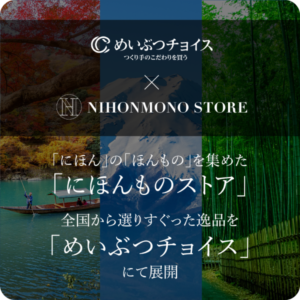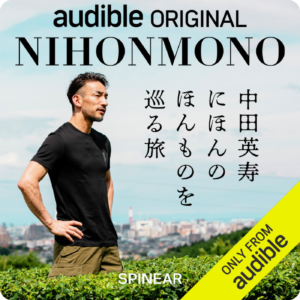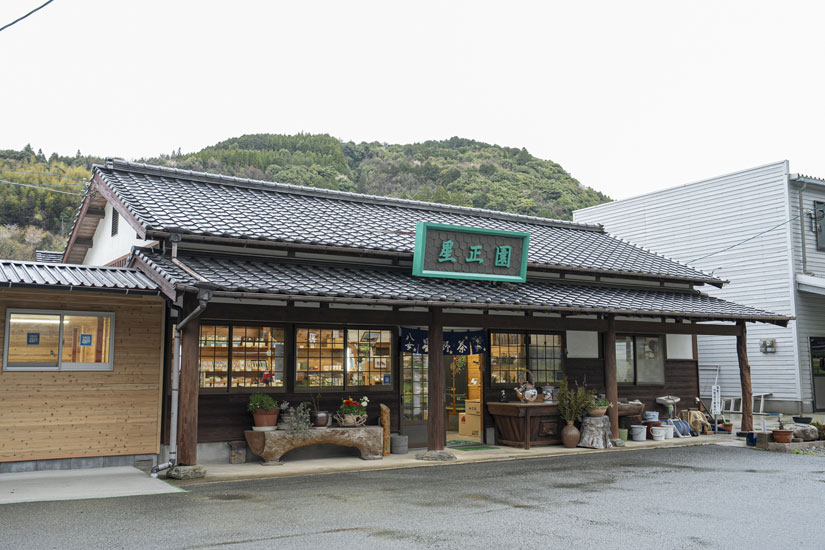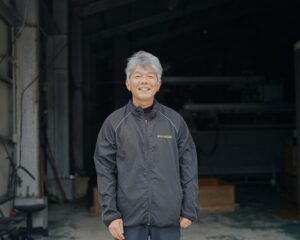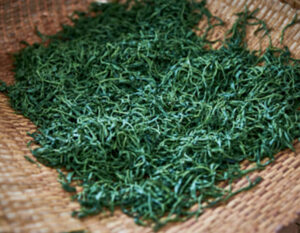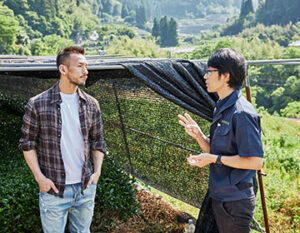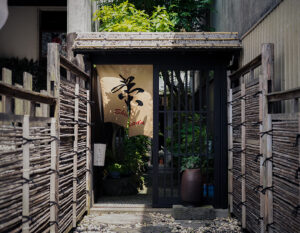Yame City in Fukuoka Prefecture is known for its tea production. Especially in Hoshino Village, which is located at a high altitude and is called “Okuyame,” the production of Kabusecha, a type of tea with a strong flavor, is thriving due to the difference in temperature. We visited two tea farmers who are earnestly engaged in tea production while facing nature on a daily basis, and experienced their passion for Japanese tea.
Tea made with traditional techniques in a beautiful mountainous area

The Yame region in the southern part of the Chikugo Plain of Fukuoka Prefecture is located between the Chikugo and Yabe Rivers, the largest rivers in Kyushu. Blessed with fertile soil, subsoil water, abundant rainfall, and a large temperature difference between day and night, the region has been cultivating tea for about 600 years, as it meets the natural conditions suitable for tea cultivation.
Hoshino Village, located in the mountains at an altitude of more than 200 meters above sea level and known for its beautiful starlit sky, is a famous producer of high-quality sencha and gyokuro teas. Hoshino tea is known as one of the highest quality Yamecha teas.
Hoshino tea is characterized by its rich flavor, deep mellow aroma, and beautiful color. Among them, Gyokuro, the highest grade of Japanese tea, has repeatedly won the top prize in the Gyokuro category of the National Tea Fair (22 times in the Heisei period), in which tea production areas throughout Japan compete to be the best in Japan in terms of Japanese tea. The “Yame Traditional Gyokuro” entered in this competition “must be grown on trees that have been pruned only once after harvest and allowed to sprout naturally until autumn,” and “covered with natural materials such as rice straw for 16 days or more. (The tea is grown by adhering to traditional techniques such as “covering” the trees with natural materials such as rice straw for at least 16 days and hand-picking the sprouts. The taste is exceptional. Pour hot water at 50-60 degrees Celsius slowly and wait for about 2 minutes, and the flavor and sweetness locked inside the tea leaves will be released in the hot water, giving it a mild, sweet, deep flavor and a noble aroma that is very impressive. In 2015, Yame Traditional Gyokuro became the first tea to be registered under the country’s Geographical Indication (GI*) protection system in order to protect its special cultivation methods and production area characteristics as intellectual property.
Of course, Traditional Gyokuro is not the only Hoshino tea. In Hoshino Village, open-air cultivation is also widely practiced in addition to covered cultivation, but it is certain that the knowledge and experience of tea farmers who have kept up the traditional techniques have led to the production of delicious tea.
GI = GEOGRAPHICAL INDICATION. A system to protect as intellectual property the names (geographical indications) of products that have achieved high quality and reputation due to special traditional production methods and characteristics of the production area, such as climate, climate, and soil.
From cultivation to processing and sales. Reflecting the voices of consumers in tea production

Mr. Kohei Takagi, who runs a tea shop in Hoshino Village called “Hoshosho-en,” is a devoted farmer who is called the hope of young farmers. After two years of in-depth study of tea cultivation and processing at the Tea Research Center of the National Institute of Agroforestry and Forestry in Shizuoka Prefecture, he returned to his hometown and now cultivates tea in a vast field of about 10 hectares (about eight times the size of the Koshien baseball stadium). Mr. Takagi’s tea plantation is located in the mountains of Hoshino Village, which is located at a high altitude. The tea plantation is located on top of a unique geological formation called Senmaigan, which contains many natural microorganisms, and is therefore blessed with rich soil. In addition to such geographical advantages, Mr. Takagi has taken on the challenge of tea cultivation with all his human knowledge, including the selection of fertilizers, the amount and timing of fertilizer application, the selection of covering materials, the timing and duration of application, and frost protection.
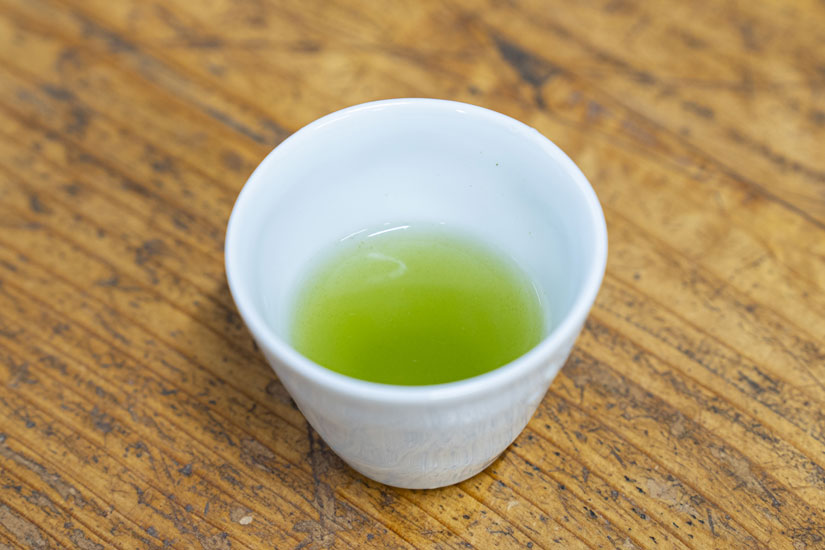
Running a tea shop has also had a positive influence on Mr. Takagi’s tea production. Generally, tea farmers rush raw tea leaves to tea factories to prevent oxidation, which begins immediately after harvesting, and deliver “aracha,” which is made by steaming, rubbing, and drying tea leaves, to tea wholesalers. The wholesalers then process and blend the “aracha” into products, but apart from wholesaling, Mr. Takagi also handles the secondary processing and blending himself. He says, “I can check the taste of the tea I make and hear directly from customers. Every year, it is a battle against nature, so it is difficult to keep the quality constant, but the voices of customers who frankly tell me, “This year’s tea tasted like this,” are the driving force behind our tea production.
Focusing on the Future as a Tea Producing Area
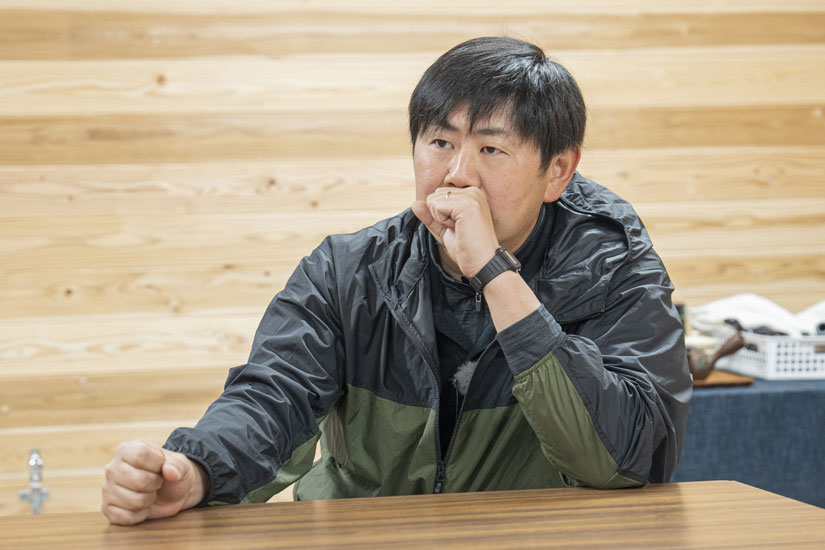
There is another key person who is indispensable when talking about Hoshino Tea. He is Masahiro Tanaka, who serves as the head of the Hoshino branch of the JA Tea Industry Youth Association. Mr. Tanaka and Mr. Takagi have been friends since childhood, and both have taken over the family business and worked hard to produce high quality tea while engaging in friendly competition with each other. The climate and soil of Hoshino Village are the reason why we can produce high quality sencha and gyokuro teas. We believe that continuing to master the art of tea production by taking advantage of the characteristics of the land will help us differentiate ourselves from other tea-producing regions. On the other hand, however, the reality is that the demand for bottled tea is increasing in Japan, and more and more households do not have a teapot. In order for the tea industry to become a sustainable industry in the future, we must consider what kind of tea the domestic and overseas markets demand and what kind of target audience we should approach from the production site. In order to explore the possibilities of organic, pesticide-free, and fermented teas demanded by overseas markets and take action, it will be necessary for producers and tea merchants to work together even more firmly than now,” says Hoshino, who is looking to the future of Hoshino Tea.
Overseas and Domestic. The Challenge of Japanese Tea Continues
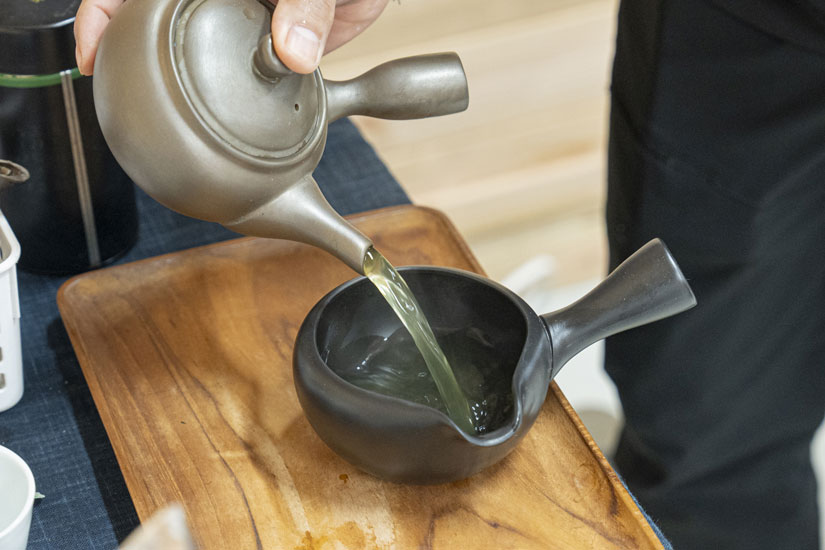
Recently, the number of Japanese tea lovers has been increasing overseas, and Hoshino tea is also exported. However, there are many areas (e.g., EU) where standards for residual pesticide concentration are strict, and the standards differ from country to country, so there are not many farmers who can produce organic and pesticide-free tea. Hoshino Village has the advantage of being located at a high altitude, which makes it difficult to attract insects, but it is said to take at least 10 years to stabilize the quality of tea without using chemical fertilizers or pesticides, which places a heavy burden on farmers. Although there are many challenges, Mr. Takagi has direct dealings with overseas farmers, “They always ask me to send them good quality products! He also sees the potential for Japanese tea to make great strides overseas. The Yameyama tea cooperative is also actively involved in overseas exports, and we look forward to future developments.
Their goal for the future is to continue their activities to encourage more people to brew tea at home,” they say. For young children, we start with hojicha, which is low in caffeine, and gradually move on to green tea. If children are exposed to home-brewed tea when they are young, even if they leave tea for a while, they often come back to it when they grow up and say, “I love making tea at home. I want to believe in such a cycle,” he says.
While conveying the richness of time spent with tea to the domestic market, they also want to enter the large overseas market. We look forward to the future of Yame “Hoshino Tea” pioneered by young tea growers.
